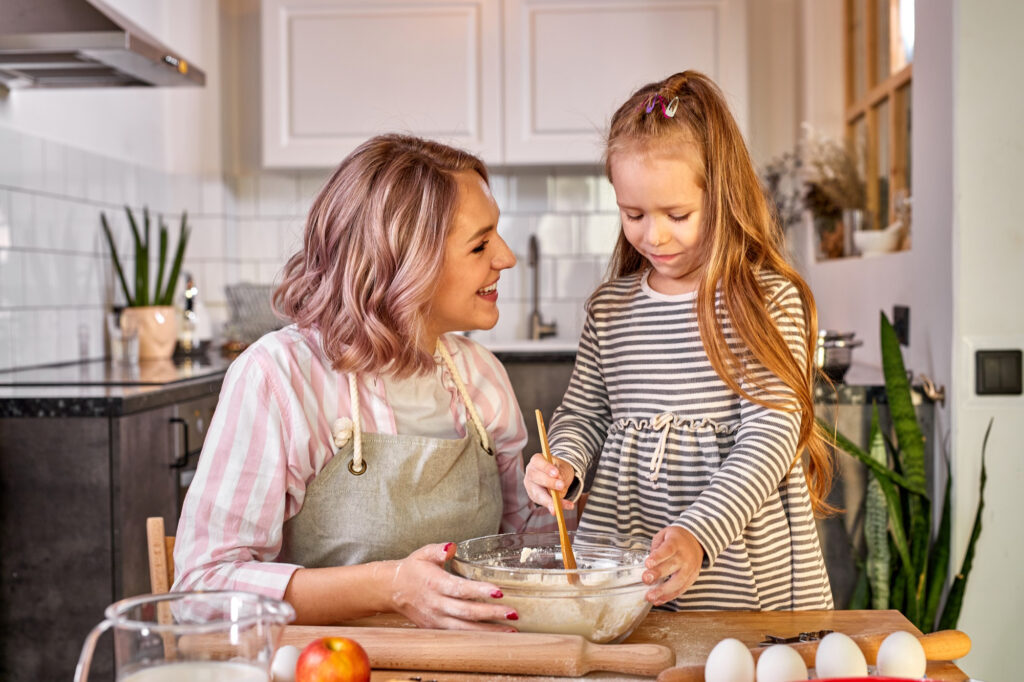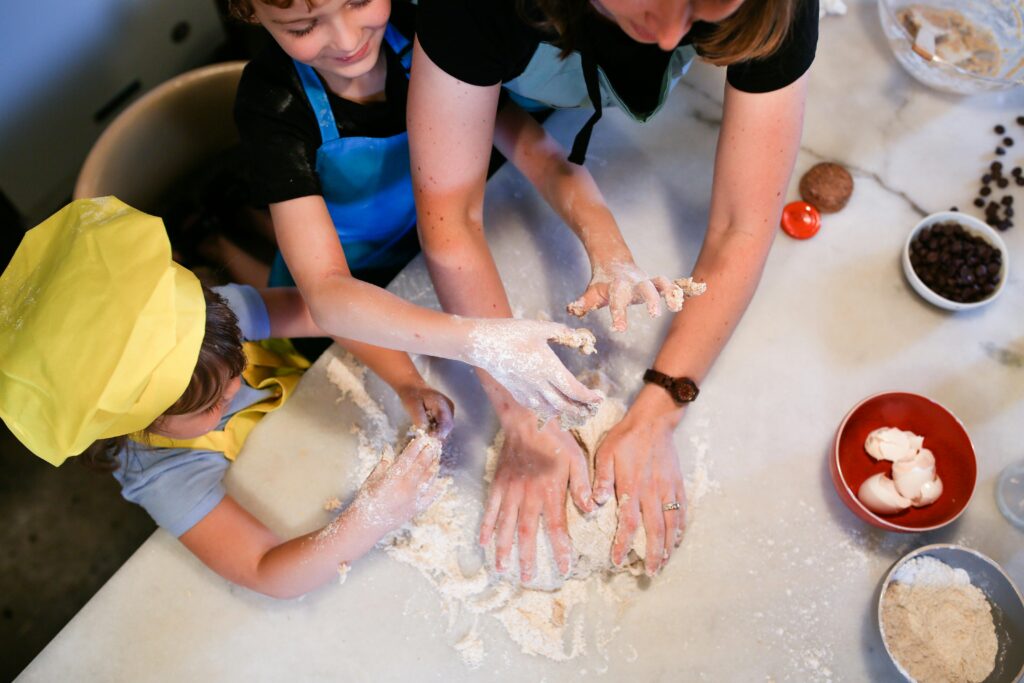A little messy. A little magical. Totally worth it.
If you’ve ever tried to cook a meal with a toddler on your hip or a preschooler “helping” by flinging flour everywhere, you know this truth: cooking with kids is not efficient. But it’s also one of the most rewarding (and hilarious) things you can do together in the kitchen.
When I first started inviting my little one into the cooking process, I had big dreams of bonding over banana bread and raising a future chef. What I didn’t anticipate was how messy, slow, and sometimes frustrating the process would be. But I stuck with it—and it’s become one of my favorite parts of homemaking.
Here’s what I’ve learned about how to actually start cooking with kids—and not lose your mind in the process.
5 Tips on Cooking with Kids
1. Get the Right Tools for Little Hands
The first step is setting up your space to work with your child, not against them. A few kid-friendly tools make a huge difference:
- Learning tower or step stool – so they can reach the counter safely
- A child-sized apron – to get them excited and keep their clothes flour-free (ish)
- Kid-safe knives – perfect for slicing soft foods like strawberries, mushrooms, or bananas
- Mini mixing bowls, whisks, and measuring cups – because using tools their size makes it feel real
These small investments create an inviting space that says, “Hey, you belong here too.”
2. Get Your Mind Right First
Okay, listen—this is the big one. Before you start cooking with kids, remind yourself:
It’s going to be messy.
It’s going to be slow.
And it probably won’t go as planned.
But that’s not failure. That’s learning.
There will be spilled milk, dropped eggs, and the occasional meltdown (yours or theirs). The key is to let go of perfection. Don’t get mad. Don’t stress. Your job isn’t to create a perfect dish—it’s to create a moment.

3. Do Your Prep Work
Before calling your child into the kitchen, you should get familiar with the recipe. Read it through. Prep any hot or tricky steps ahead of time. Chop what needs serious knife skills. Get out the ingredients you’ll need.
The smoother things go, the less chaos there will be when your tiny sous chef joins you. You’ll be way more present if you’re not running around looking for the cinnamon or realizing you’re out of eggs halfway through.
4. Make It Fun, Not a Chore (H3)
This isn’t about getting dinner on the table fast—it’s about making memories. Let them stir. Let them taste. Let them dump the flour in (maybe just guide the scoop a bit).
Teach them what each ingredient is. Talk about where it comes from. Let them lick the spoon (unless it’s raw egg, of course).
This is food education in the best possible form—playful, hands-on, and totally snackable.
5. Start Simple and Practice Together (H3)
Don’t start with soufflé. Go for recipes with a few easy steps like:
- Banana muffins
- Homemade pizza
- Pancakes or waffles
- Fruit salad with yogurt drizzle
- No-bake energy bites
Every child is different—some will love getting messy and others will be more cautious. That’s okay. Go at their pace. Some days they’ll be super into it; other days, not so much. Still okay.
Final Thoughts: It’s Not About the Outcome
At the end of the day, cooking with kids is about more than the food. It’s about connection. Life skills. Confidence. Curiosity. And yes—fun.
You’re not just making a meal; you’re making a memory.
So take a deep breath, grab the apron, and know that every mess is part of the journey. With time, it does get easier. And one day, they might just surprise you by making breakfast all on their own.
Until then, just enjoy the flour on the floor—and the magic in the moment.
